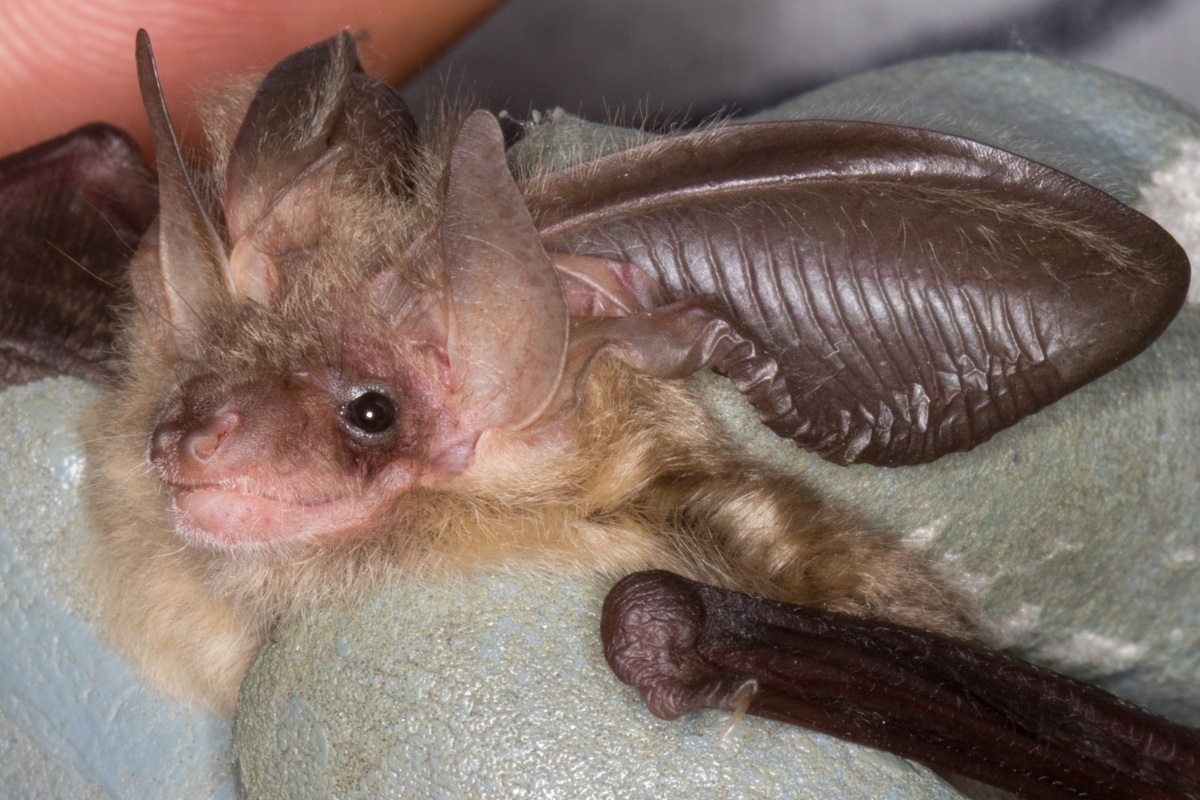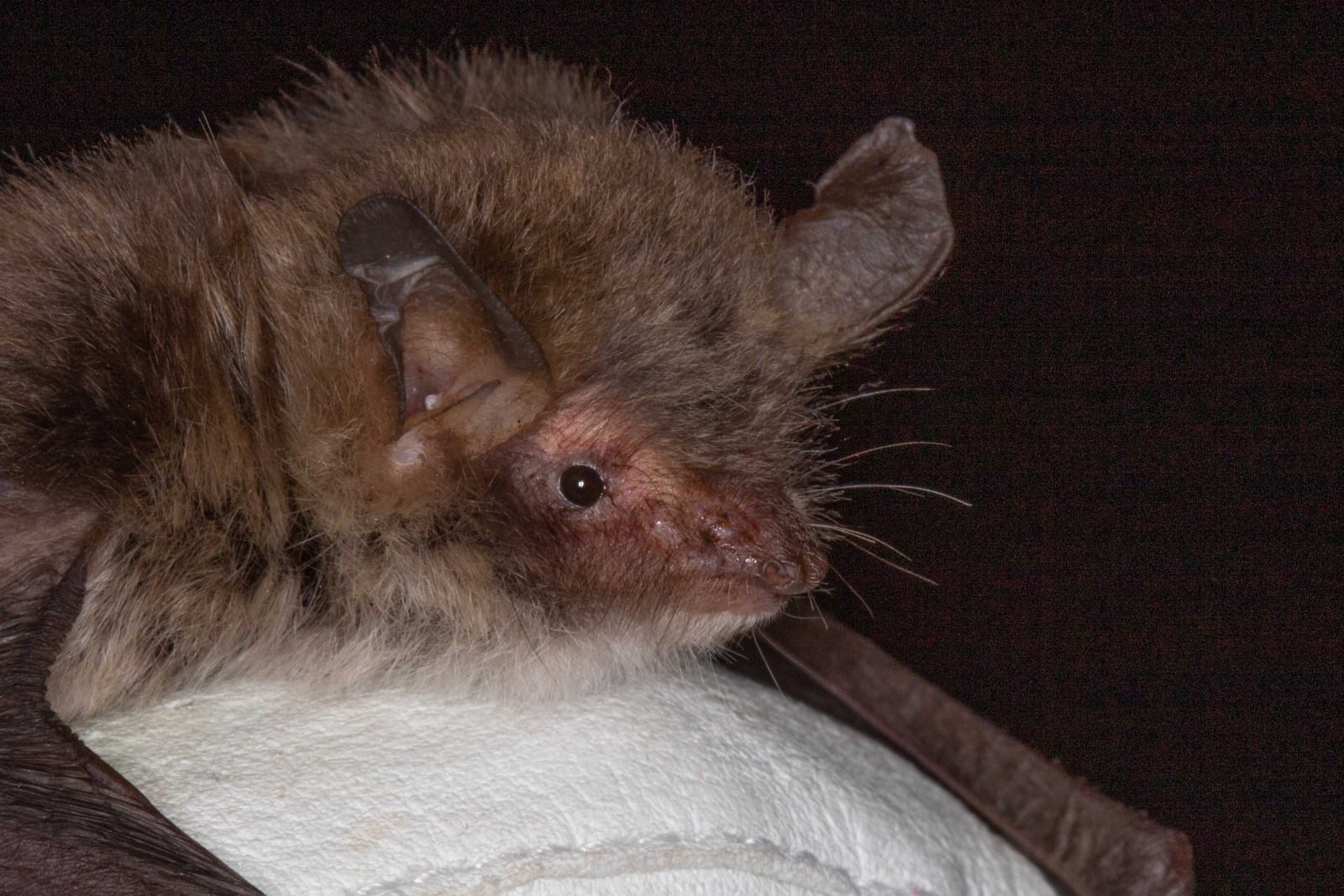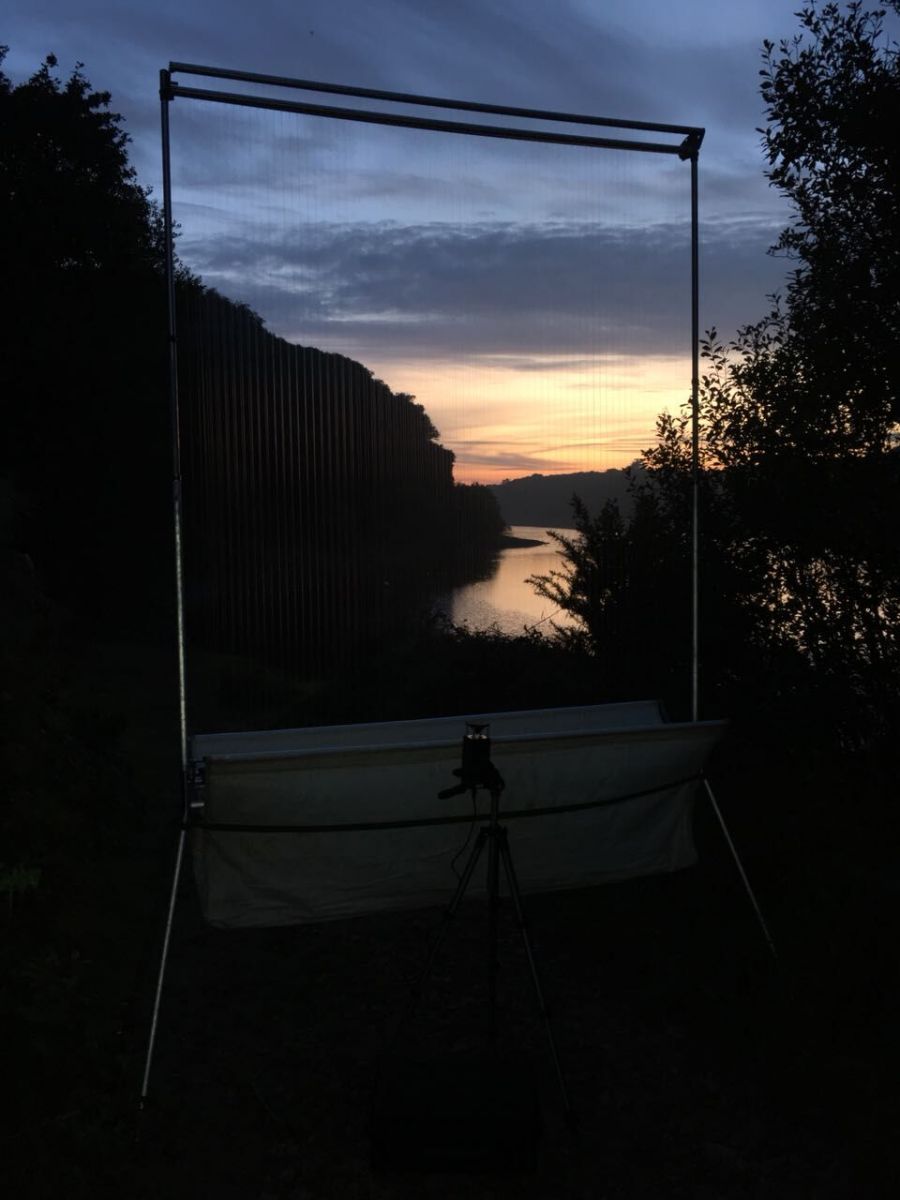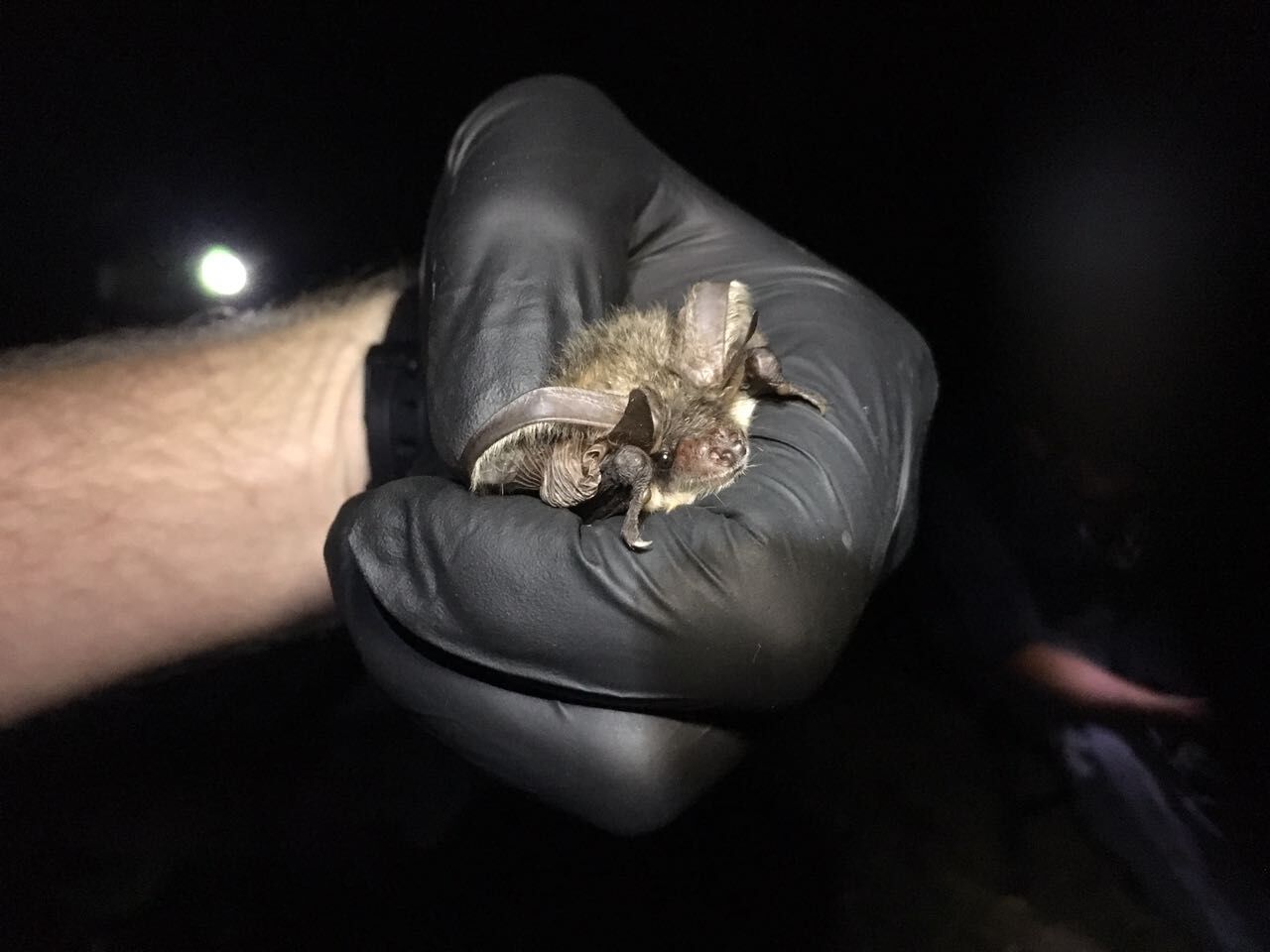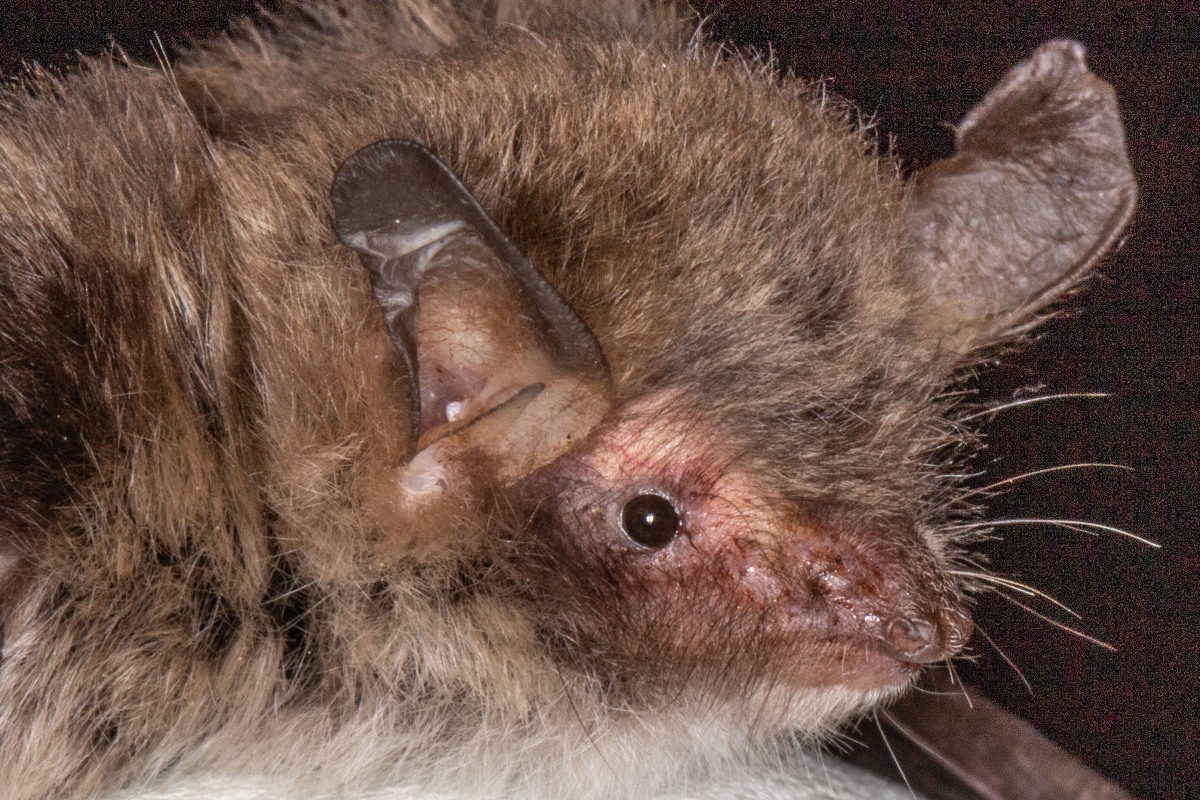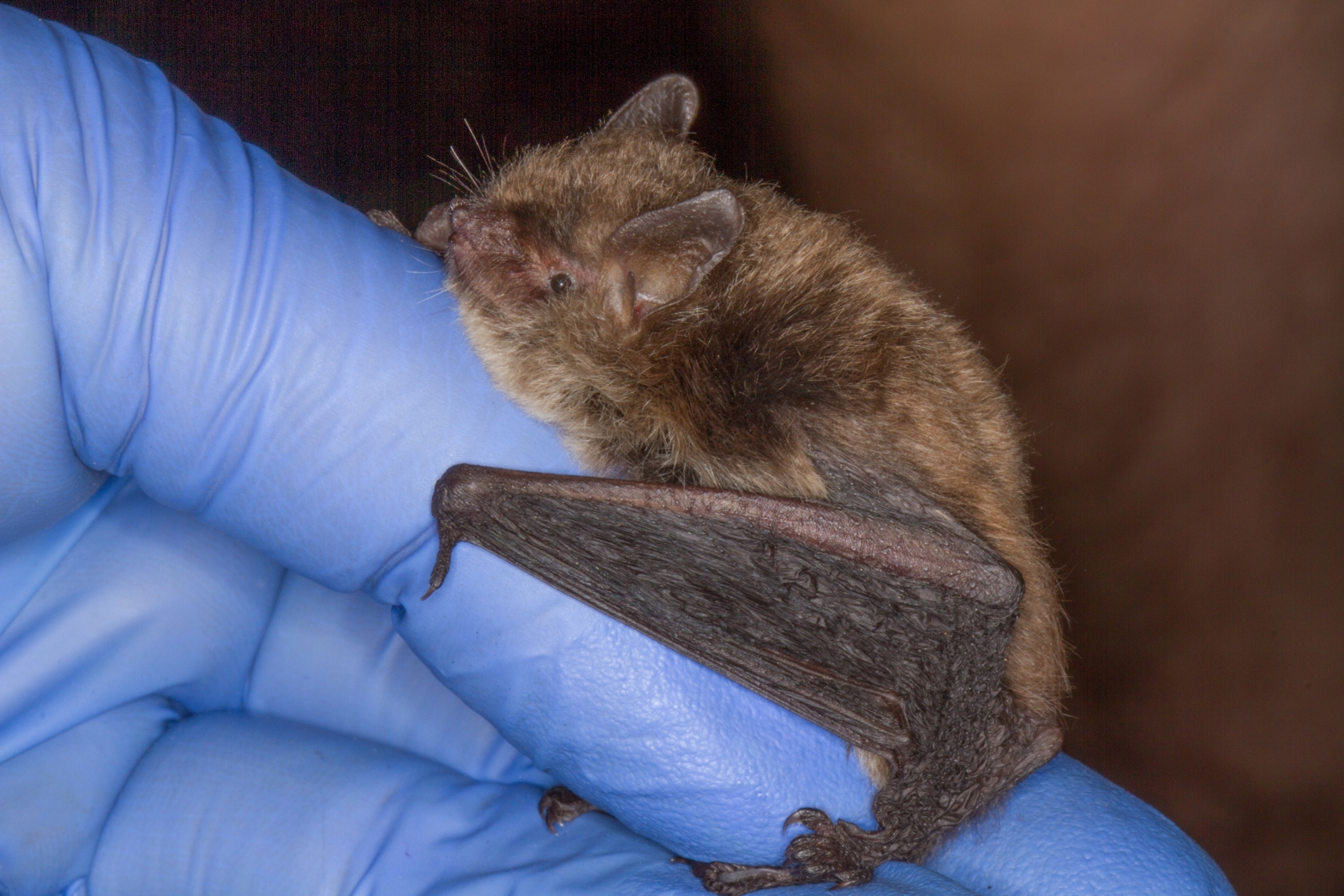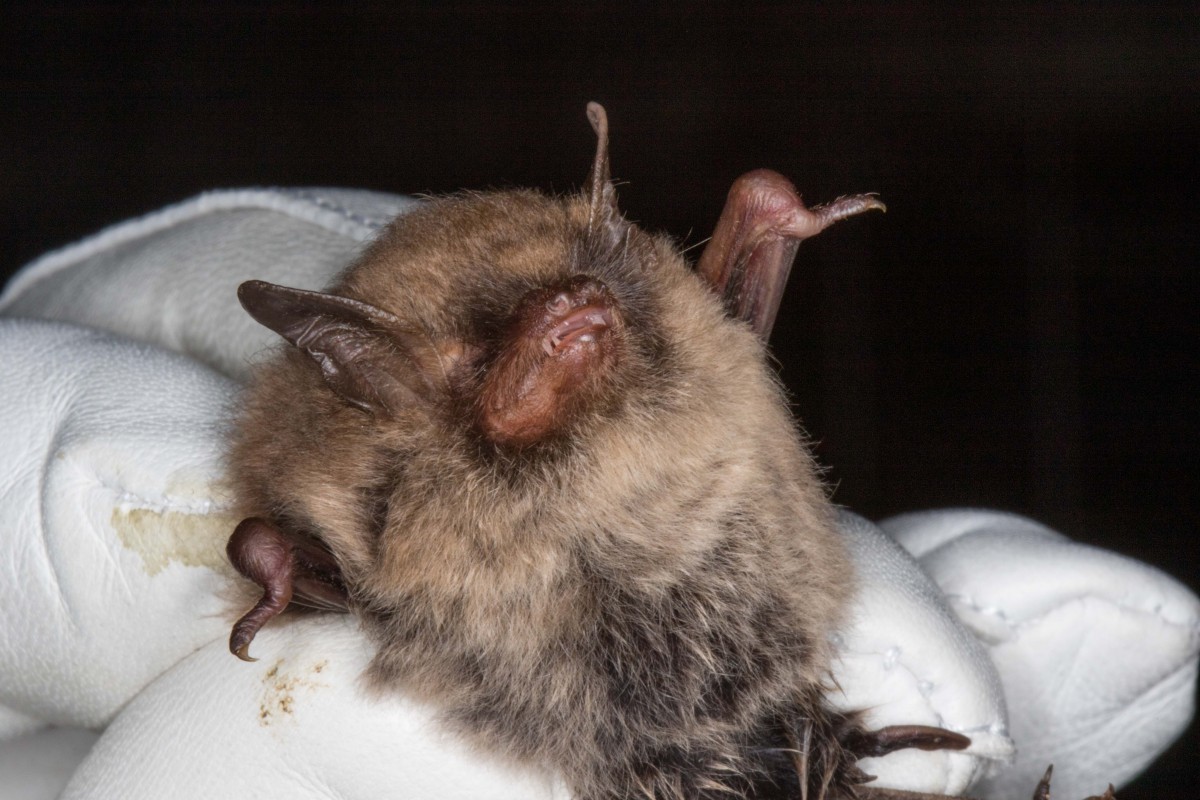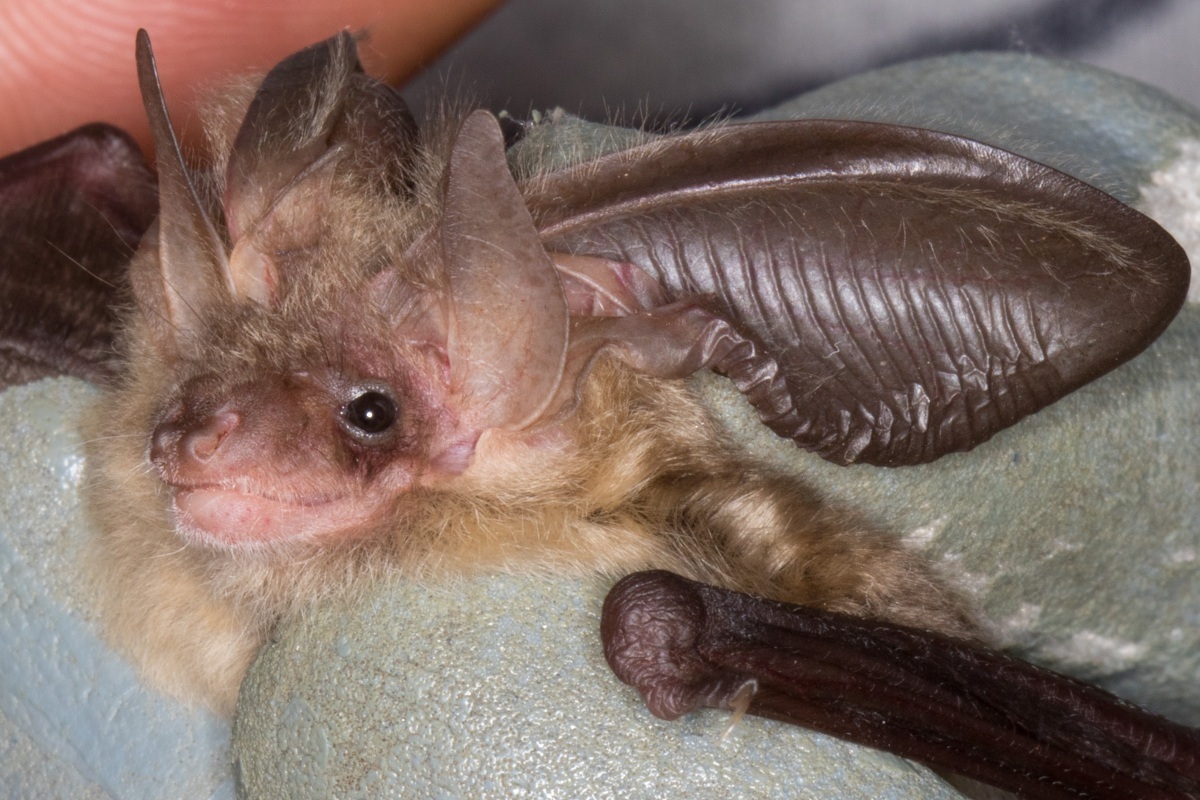The Alcathoe Whiskered bat was first described in 2001 in Greece. They are morphologically very similar to the Whiskered bat and were probably confused with the species pre 2001. It was only after genetic testing that it could be confirmed that they represented a different species.

In Britain the species was first discovered in 2010.
We discovered this species in St Catherine’s woods in May 2016 whilst conducting research for the Woodland project. It is a woodland specialist and it is likely that this female bat is breeding in the local woods as she was probably in the early stages of pregnancy.
We identified the bat through DNA analysis of its droppings and through recordings on release.
This is the smallest of the European Myotis species and resembles the colouring of a Daubenton’s Bat. It is difficult to differentiate between the Alcathoe, Whiskered and Brandt’s Bat although the dentition can give good clues. The ears are slightly shorter and the tragus does not quite reach the notch in the ear. It has a short, pale muzzle and heart shaped nostrils, in common with Brandt’s. The male penis is similarly broad for its length in contrast with Brandt’s club shaped penis.
Echolocation is rather distinctive with both a high start frequency and a high end frequency.
It is found in riparian habitat with mature hardwood trees as well as in mountainous areas, and is a tree roosting species.
It is classed as Data Deficient in the IUCN redlist.
